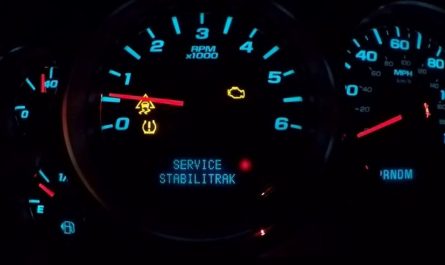Car logos are far more than simple visual markers. They are the face of a brand, the reflection of decades of heritage, and the connection between engineering excellence and human imagination. Drawing car logos, whether by hand or digitally, has become an artistic passion for designers, car enthusiasts, and even students learning graphic design. Understanding how to approach car logos drawing not only helps us appreciate automotive branding but also allows us to explore the creativity, symbolism, and historical evolution embedded in these iconic emblems.

Why Car Logos Matter in Design and Culture
When you see the three-pointed star of Mercedes-Benz or the iconic blue oval of Ford, you instantly recognize the brand and associate it with its reputation. This is the true power of a car logo—it serves as the identity of the brand across all markets worldwide. Each car logo tells a story of values, innovation, and national pride. For example, Ferrari’s prancing horse is not just a design; it is tied to racing heritage and performance.
In the world of design, drawing these logos is a creative challenge because it requires precision, symmetry, and a deep understanding of brand identity. For learners, drawing car logos also sharpens observation, accuracy, and artistic skill, since many logos involve geometric elements, typography, or abstract shapes that must be replicated with care.
The History of Car Logos and Their Influence on Drawing
Car logos have existed for more than a century, evolving from detailed, complex badges to modern minimalist designs. Early car logos often had intricate patterns, crests, and even handwritten scripts. For instance, Cadillac’s early emblems were highly decorative, reflecting luxury and nobility. Over time, as branding shifted toward simplicity and global recognition, logos such as BMW, Toyota, and Hyundai adopted clean, bold shapes and colors.
For artists practicing car logos drawing, this history is important. Drawing older logos requires mastering detailed linework and ornamental styles, while modern logos challenge artists to perfect symmetry and balance with minimal strokes. By studying the history of logos, artists gain insights into how cultural shifts influence design aesthetics.
Essential Tools for Car Logos Drawing
To draw car logos effectively, the right tools play a major role. Traditional artists may use pencils, rulers, compasses, and ink pens to achieve precision. Sketchbooks provide a surface for practice, while erasers help refine small mistakes, which is crucial because most logos require perfect geometry.
Digital drawing tools have also become popular, with software like Adobe Illustrator, CorelDRAW, and Procreate offering vector-based accuracy. Using digital tools allows artists to create scalable versions of logos while experimenting with colors and effects. Whether traditional or digital, the choice of medium depends on the artist’s style and goals, but the underlying principle remains the same—accuracy and attention to detail.
Techniques for Drawing Car Logos Accurately
Drawing car logos is an exercise in patience and precision. The process typically begins with observing the logo’s structure and breaking it down into simple shapes. For example, the Audi logo can be broken into four interlocking circles, while the BMW logo starts with a circle divided into quadrants. By simplifying complex designs into basic shapes, artists can gradually refine their drawings.
Shading and coloring come next. Many car logos use metallic effects, gradients, or bold primary colors. For instance, Toyota’s logo requires smooth curves with overlapping ovals, while Ferrari’s horse demands detailed linework to capture its motion and elegance. Artists often practice the same logo multiple times until they achieve the sharpness and fluidity that make the drawing stand out.
Famous Car Logos to Practice Drawing
Car enthusiasts often begin with the most recognizable logos because they are both inspiring and challenging. Some famous examples include:
- Ferrari’s Prancing Horse – Symbol of speed and racing heritage. Drawing it requires capturing movement and fine anatomical detail.
- Mercedes-Benz Three-Pointed Star – A geometric challenge of perfect symmetry inside a circle.
- BMW Roundel – A classic design combining circular shapes with color blocking.
- Audi Four Rings – A great exercise in mastering overlapping forms.
- Toyota’s Triple Oval – Known for its clean curves, ideal for practicing proportion.
- Lamborghini’s Bull – A detailed animal logo requiring shading and bold linework.
Practicing these logos not only improves drawing technique but also helps artists appreciate the branding philosophies behind them.
Symbolism Behind Popular Car Logos
Every car logo carries hidden meanings that artists must understand to draw them with respect and accuracy. BMW’s blue and white quadrants represent the Bavarian flag, linking the brand to its German roots. Audi’s four rings symbolize the union of four automobile manufacturers. Toyota’s three ovals represent the heart of the customer, the heart of the product, and their unification.
When drawing these logos, knowledge of symbolism inspires deeper creativity. Instead of viewing logos as random shapes, artists see them as cultural icons that deserve careful representation.
Challenges in Car Logos Drawing
Although it may look simple at first, drawing car logos comes with its difficulties. Symmetry is the biggest challenge—one side of a star, circle, or shield must mirror the other perfectly. Achieving clean lines and proportions requires practice, especially when working freehand. Another challenge is rendering details, such as the wings in the Bentley logo or the horse in Ferrari’s emblem.
Digital artists face their own challenges, such as mastering vector curves, handling gradients, and ensuring scalability. Overcoming these difficulties requires practice, reference study, and sometimes tracing outlines before attempting freehand work.
The Role of Car Logos in Branding and How Drawing Enhances Appreciation
For car companies, logos are more than artistic designs—they are brand signatures recognized worldwide. This is why drawing them is an educational journey for design students and enthusiasts. When artists draw these logos, they start noticing details that ordinary viewers overlook. For example, the subtle gradient in the Volkswagen logo or the sharpness of Lexus’s “L” inside an oval reflect brand consistency.
By practicing car logos drawing, individuals not only improve artistic skills but also develop brand awareness, marketing understanding, and design analysis skills. It’s an activity that combines art with cultural appreciation.
Car Logos Drawing as a Hobby and Career Path
For many, drawing car logos starts as a fun hobby. Enthusiasts sketch their favorite brands as a way of expressing admiration for cars. Over time, some turn this hobby into professional skills, becoming logo designers, graphic artists, or branding consultants.
In the automotive world, companies hire professional designers to update or redesign logos while keeping brand heritage intact. For instance, Nissan, Peugeot, and Kia recently modernized their logos to adapt to digital platforms. Artists who master car logos drawing can find opportunities in design studios, advertising agencies, or even car-related merchandise businesses.
Digital Evolution of Car Logos and Its Impact on Drawing
In today’s digital age, most logos are designed with vector-based tools to ensure scalability across screens, billboards, and print. This has shifted the way artists approach drawing. Instead of focusing only on physical sketching, they now also practice with software that uses Bézier curves and digital grids.
Digital drawing also opens new creative possibilities. Artists can experiment with 3D effects, metallic finishes, and animations of logos. This blending of traditional hand-drawing skills with digital design expertise creates a versatile skillset for modern creators.
How Beginners Can Start Car Logos Drawing
For beginners, the key is to start simple and build gradually. Choosing logos with clean shapes like Audi, BMW, or Toyota is a good starting point. Using tracing paper to follow outlines can help build muscle memory for curves and proportions. Once confidence grows, moving on to complex logos like Ferrari, Lamborghini, or Bentley helps develop advanced skills.
Regular practice, attention to symmetry, and studying the history behind each logo will make learning both enjoyable and educational. Digital platforms like YouTube tutorials, drawing communities, and design courses also provide guidance for those who want to master this niche art form.
The Future of Car Logos and Artistic Inspiration
With the rise of electric vehicles and futuristic car designs, logos are also evolving. Many brands are adopting flat, minimalist designs optimized for digital screens. Volkswagen, Nissan, and Kia have already shifted to simplified 2D logos. This trend gives artists new challenges—how to capture brand power using fewer lines and simpler shapes.
For car logos drawing enthusiasts, the future promises fresh opportunities to experiment with clean designs, explore electric vehicle branding, and blend tradition with modernity.
Conclusion
Car logos drawing is more than copying shapes—it is about understanding the story, symbolism, and branding behind each emblem. It teaches patience, precision, and creativity, while also deepening appreciation for automotive heritage. From Ferrari’s iconic horse to Toyota’s triple ovals, each logo challenges artists in unique ways. Whether pursued as a hobby or a professional skill, drawing car logos bridges the worlds of art, design, and automobile culture, making it an inspiring practice for enthusiasts around the globe.
FAQs
Q1: Is it difficult to draw car logos?
It depends on the logo—simple ones like Audi are easier, while detailed ones like Ferrari require more skill.
Q2: What tools are best for drawing car logos?
Both traditional tools like pencils and digital tools like Illustrator are effective, depending on preference.
Q3: Can drawing car logos improve design skills?
Yes, practicing logos sharpens precision, symmetry, and branding awareness.
Q4: Which car logos are best for beginners to draw?
Logos like Audi, BMW, Toyota, and Mercedes-Benz are great for starters.
Q5: Are car logos changing in modern times?
Yes, many companies are shifting toward minimalist, flat designs for digital branding.


